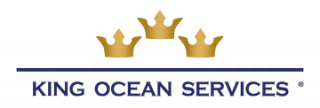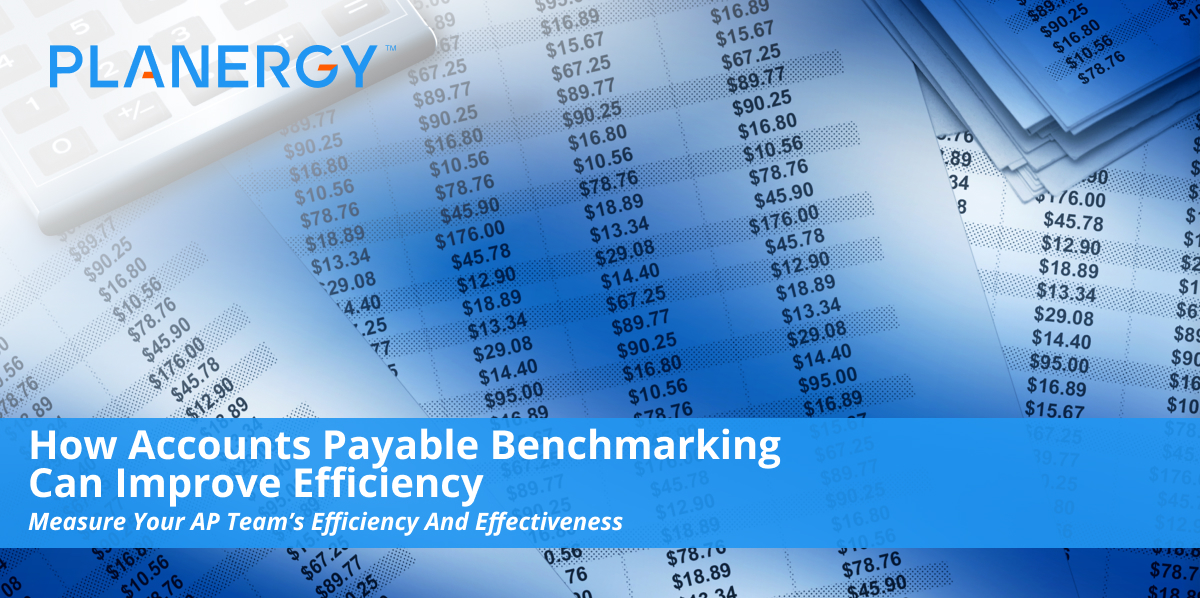Often, organizations judge the efficiency and effectiveness of the accounts payable team by the number of invoices processed or total error-free payments disbursed over a period.
However, the accounts payable process holds special significance since it can have a distinct bearing on working capital, efficiency, and profitability of the Procure to Pay (P2P process) and, ultimately, an organization’s relationship with its vendors.
A better way for an organization to gauge, measure, and analyze the AP performance and discover growth and improvement opportunities is to use accounts payable benchmarking.
What Is a Benchmark?
Benchmarking is a well-defined process of measuring and comparing key business metrics against industry peers, competitors, and leading organizations to analyse and discover how and where the organization can make changes to improve performance.
Benchmarking is all about making sense of the seemingly endless data stream to achieve certain results. It allows an organization to tap into its own and its competitors’ historical data to gauge its performance among its peers.
An Introduction to Accounts Payable Benchmarking
AP Benchmarking enables an enterprise to measure and analyze the AP function’s performance against benchmarks and leverage improvement opportunities. These improvements can have a ripple effect on other processes too.
For instance, invoice and payment approvals are measured in relation to the AP team’s speed and efficiency. However, invoice and payment approvals lead to a continuous delay in B2B payments, which can affect relationships with key suppliers, and ultimately result in a lost competitive advantage for the organization.
Benefits of Accounts Payable Benchmarking
AP Benchmarking plays a pivotal role in improving the accounts payable process by measuring key performance metrics and comparing them against leading organizations. When compared against peers, the AP teams within best-in-class organizations cost less, show better accuracy, take fewer hours, provide better insights, and result in fewer complaints from vendors and suppliers.
An enterprise can gain the highest efficiency level and deliver exceptional results by tracking the proper accounts payable key performance indicators and aiming to improve its AP function’s performance over time.
7 Accounts Payable Key Performance Metrics to Track Accounts Payable Efficiency
Cost-Effectiveness (Average AP Operating Cost per Invoice Processed)
Out-of-control accounts payable operating costs can quickly erode profitability and bring the entire workflow to its knees. However, an organization can control the operating costs and accurately measure the AP operations efficiently by calculating the average AP operating cost per unit.
Average operating cost per unit = Total operating cost divided by the number of invoices processed
The lower the average operating cost per unit, the better the performance of the Accounts Payable department.
For instance, if an organization’s AP operating cost is $100,000 and the team processes 10,000 invoices on average every month, the average operating cost is $10 per unit.
This cost can then be compared with the APQC benchmark, which reports that AP teams within best-in-class organizations process invoices at $2.02 per unit, while the median cost for invoice processing is $5.71 per unit.
According to CPO Rising, the average cost is $9.25 per unit, while in Ardent Partners’ Accounts Payable Metrics that Matter in 2021 Report, reported a $10.89 average cost to process an invoice, way higher than the APQC benchmark.
However, a word of caution is needed here. Average operating cost per unit may be misleading if total invoices processed include a high number of exceptions or non-PO invoices. When invoices are matched instantly with purchase orders and paid without intervention, they often cost less than exceptions requiring manual rework before being approved.
Process or technological deficiencies are often the main culprits behind incremental processing costs. Accounts payable automation drives cost savings by creating an intelligent workflow, resulting in a saving of 60% to 90% per document, depending on the maturity of current processes. Implementing accounts payable automation software is a key step to improving efficiency in this area.
Staff Efficiency (Invoices Processed Per FTE)
This metric enables organizations to gain valuable insights into the efficiency and productivity of your AP team as a whole.
Invoices Processed Per FTE = Total invoices processed divided by the total number of full-time employees (FTEs) in the AP department.
It can be calculated yearly, monthly, fortnightly, weekly, daily, or even hourly, depending on the volume of invoices that an organization handles.
According to APQC, highly-productive teams can process 23,333 invoices per FTE, whereas inefficient teams process only 6,082 invoices per FTE.
According to Ardent Partners’ research, organizations received 49% of invoices manually in 2021, which may have also led to slower invoice processing.
The best-performing organizations apply automation to process invoices using an automated workflow to improve staff efficiency.
They also eliminate approval bottlenecks by giving on-the-go access to their staff to approve invoices via mobile. Not only this, but they also eliminate paper-based processes, wherever possible, to achieve AP operations efficiency and effectiveness.
Faster and more efficient invoice approval processes enable an organization to take advantage of early payment discounts, better cash flow management, improved supplier relationships, and significant cost savings.
Percentage of Discounts Lost
It is one of the most crucial-yet-overlooked KPIs that eats into an organization’s profitability. To measure this KPI, an enterprise should track those instances when it failed to take advantage of early payment discounts offered by a supplier. Also, it should analyze the total monetary value lost and discover missed opportunities.
Percentage Of Discounts Lost = Total transactions where discounts were not captured divided by Total transactions where suppliers offered discounts
“The lower, the better” can be a misleading way to measure this KPI since an organization does not always have sufficient cash in hand to pay the full invoice amount early and capture a discount. Hence, each instance should be analyzed separately to discover opportunities for process improvement in the future.
The business can consider processing invoices faster to improve this KPI and capture discounts wherever possible. Besides, it should also look out for a solution that sends early payment discount reminders, like Planergy.
Number of Supplier Inquiries, Discrepancies, and Disputes
If an AP team spends a significant portion of its time handling supplier inquiries or resolving discrepancies and disputes, it can’t create value.
According to Ardent Partners’ Accounts Payable Metrics that Matter in 2021 Report, Accounts Payable Staff spend 22% of their time responding to supplier inquiries.
An organization should diligently track the total number of supplier inquiries, discrepancies, and disputes that the AP team must handle. The lower this number, the better.
To minimize the time spent by the AP team answering inquiries or resolving disputes, the organization can automate the AP process, which will eliminate the risk of duplicate invoices and payments. Besides, the communication to suppliers should be strengthened to inform them of key milestones and status related to invoice processing, payment, etc.
Vendor Payment Errors
An organization can measure its diligence in paying vendor invoices by tracking vendor payment errors, such as overpaid invoices, underpayments, payments made to a wrong vendor, duplicate payments, etc.
Vendor Payment Errors = Erroneous transactions over a period divided by the total number of transactions over the same period.
A significant reason behind vendor payment errors is a deep-seated practice of organizations to make manual payments. According to Ardent Partners’ Accounts Payable Metrics that Matter in 2021 Report, 43% of B2B payments are still made manually. Manual payments are prone to human errors and unnecessarily increase the overall invoice cycle time. Also, not having upstream data (PO, receiving information) to compare against for accurate 3-way matching makes it difficult to approve invoices for payment quickly and accurately. Tracking from purchase through to invoice matching with a Procure-to-Pay software can remove many payment errors.
To improve this KPI, organizations should coordinate their AP with upstream data and consider using electronic payment methods such as ACH, Credit Card, Wire, virtual card, etc.
Invoice Processing Time
Invoice Processing Time—total time taken by the AP team from receiving an invoice to making it “ready-to-pay”—shows the overall efficiency of the AP workflow.
According to Ardent Partners’ Accounts Payable Metrics that Matter in 2021 Report, the average time to process an invoice was 10 days in 2021.
While this benchmark can’t be a one-size-fits-all solution since performance can vary depending on the industry, business size, the number of invoices received, etc., it’s always worth keeping an eye on it as it can put other KPIs at risk.
Invoice Exception Rate
When an invoice misses essential details such as incorrect or missing purchase orders, incorrect vendor data, routing errors, or approval hang-ups – it can shackle the accounts payable process.
Invoice Exception Rate = Invoices flagged for an exception divided by total invoices received in a period.
According to Ardent Partners’ Accounts Payable Metrics that Matter in 2021 Report, about a quarter of invoices, i.e., 24.6%, were flagged for exceptions.
Often, the AP teams have to perform additional work to get invoices with exceptions approved, leading to unnecessary delays in invoice processing. It also eats into the AP staff’s valuable time that they could have spent focusing on more strategic tasks to help achieve company goals.
An organization can control the invoice exception rate by automating the invoice processing system that matches invoices to POs based on rules and promptly sends instant reminders to the team to handle exceptions.
The Road to Success in the New Normal
As the world marches into the “New Normal,” organizations will have to plan and implement AP process automation to reach the next level of efficiency and effectiveness and achieve peak performance.
AP automation will result in faster processing of invoices, lower operating costs, fewer errors in invoice processing and payments, and decreased fraud risk.
Organizations need to automate the AP process as much as possible to increase efficiency, productivity, and accuracy. Benchmarking will provide success metrics for how well automation is working.
Ultimately, measuring the right key performance indicators and optimizing the AP process through automation are the only viable ways to improve the accounts payable process.




